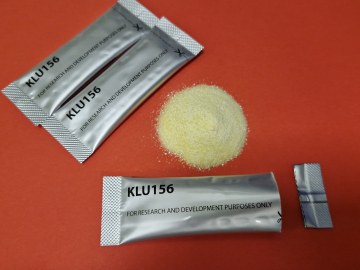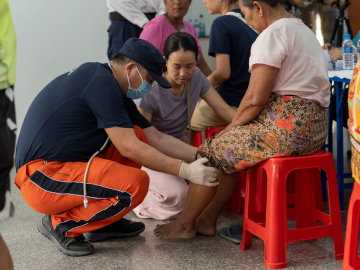Africa’s Different Dengue Symptoms Require New WHO Diagnostic Criteria
Dengue fever defies easy diagnosis.
The potentially lethal and widespread disease causes a broad range of symptoms and severity—especially for children. In many parts of the world, especially Southeast Asia and South America, this viral illness can cause hemorrhagic fever, shock, and death in children.
Surprisingly, children with dengue in Kenya and other parts of East Africa are rarely hospitalized and generally display much milder symptoms than children elsewhere.
Over nearly 2 decades of dengue research in Kenya, I (LaBeaud) noticed this repeatedly. On a recent research trip to Kenya, we discussed this phenomenon over dinner with longtime collaborators Francis Mutuku and Bryson Ndenga: Could we prove that dengue manifested differently in Kenya, and if so, what would it mean for disease surveillance?
Over the years, the WHO has tried multiple times to develop comprehensive and effective diagnostic criteria for dengue. We wondered if these criteria, which had been criticized as too broad and inclusive to be helpful by researchers in Southeast Asia, were effective at diagnosing symptomatic dengue infections in Kenya.
We decided to investigate and analyzed our existing data on 7,561 children gathered over 5 years from a prior prospective cohort study in 4 separate surveillance sites in Kenya. They were tested for dengue by RT-PCR and concurrently surveyed for their symptoms. We found that of 369 PCR-confirmed dengue cases, the majority (62%) of symptomatic pediatric dengue infections did not meet the WHO screening criteria for the disease.
The most common symptoms children experienced in our study were fever with headaches or aches/pains. No children had severe hemorrhagic symptoms or leaky capillary syndrome, 2 of the most distinctive symptoms of severe dengue. The more mild symptoms experienced by Kenyan children are similar to other experiences reported across Africa. In contrast, in the Americas and Asia, severe dengue represents up to 28% of cases.
Based on our findings published in PLOS Global Public Health earlier this year, we believe the WHO should modify its criteria again to more accurately reflect the African experience.
Although the majority of individuals worldwide have mild symptoms and three-quarters of infections are believed to remain asymptomatic, that is no reason to ignore dengue in Africa. Another risk factor for severe disease is a prior infection with a different dengue serotype (sub-group). All 4 dengue serotypes circulate in Kenya and are increasingly found in other tropical regions of the world. This means that while a child's first case of dengue may be mild, a second infection with a different serotype later in childhood or adulthood is more likely to be severe. It is important to understand for public health interventions and vaccination implementation. Furthermore, with climate change and increasing urbanization, we will see more dengue infections in areas and populations not previously afflicted by the virus.
Our findings need to spark a conversation about the WHO diagnostic criteria for dengue and how to make it reflective of the very distinct experiences in different parts of the world. It is also important to further investigate the varying immunologic responses by different groups of people to understand if and how they are being driven by genetic factors or other causes.
With a better understanding of how dengue manifests in different regions of the world, we can be better equipped to prevent its spread.
Aslam Khan, DO, is a Stanford clinical assistant professor of Pediatrics - infectious diseases and a Global Health Faculty Fellow at the Stanford Center for Innovation in Global Health.
Desiree LaBeaud, MD, MS, is a Stanford professor of Pediatrics - infectious diseases, a member of the Stanford Center for Innovation in Global Health’s core leadership team, senior fellow at the Stanford Woods Institute for the Environment, and professor, by courtesy, of epidemiology and population health at the Stanford Doerr School of Sustainability.
Children walk home from school in Nairobi, Kenya, on June 30, 2022. Donwilson Odhiambo/SOPA Images/LightRocket via Getty Images




